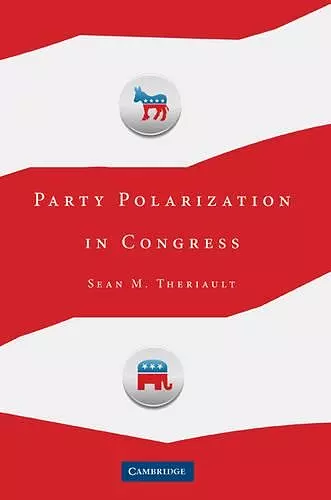Party Polarization in Congress
Format:Hardback
Publisher:Cambridge University Press
Published:18th Aug '08
Currently unavailable, and unfortunately no date known when it will be back
This hardback is available in another edition too:
- Paperback£25.99(9780521717687)

This book examines how Democrats and Republicans on Capitol Hill have become polarized since the early 1970s.
This book examines more than 30 years of congressional history to understand how it is that the Democrats and Republicans on Capitol Hill have become so divided. It traces the rise in party polarization to procedures used during the legislative process and examines their origins and effects on legislative politics.The political parties in Congress are as polarized as they have been in 100 years. This book examines more than 30 years of congressional history to understand how it is that the Democrats and Republicans on Capitol Hill have become so divided. It finds that two steps were critical for this development. First, the respective parties' constituencies became more politically and ideologically aligned. Second, members ceded more power to their party leaders, who implemented procedures more frequently and with greater consequence. In fact, almost the entire rise in party polarization can be accounted for in the increasing frequency of and polarization on procedures used during the legislative process.
“Sean Theriault has done something far too rare in the study of American politics: provided a truly synthetic account of a vital political development, the dramatic polarization of Congress over the last generation. Mixing rigorous analysis with revealing stories and careful consideration of alternative explanations, Theriault’s book is a one-stop source for those wishing to understand why Republicans and Democrats just can't get along in the modern Congress.” -Jacob S. Hacker, Professor of Political Science, University of California, Berkeley
“Sean Theriault gracefully integrates the many explanations that have been offered for the increasing party polarization evident in the US Congress. He compellingly argues that as congressional districts become more homogeneous, party leaders become stronger and thus better positioned to employ procedural strategies that exacerbate party polarization. All told, Party Polarization in Congress is a creative, synthetic, and extremely valuable treatment of one of the most intensely studied topics in modern American politics.” -John R. Hibbing, University of Nebraska-Lincoln
“Probably no topic has received more attention from analysts of American politics over the last couple of decades than partisan polarization. In this book, Sean Theriault has substantially advanced our understanding of the many facets of that phenomenon. He deals with the electoral sources of polarization, including the roles of redistricting, geographic sorting, and party activists. Theriault also assesses the relationship between these electoral roots and the evolution of legislative procedures, and their effect in turn on elite polarization in both the House and Senate. This is an exceptional book, valuable and accessible to congressional researchers and undergraduate students alike.” -David Rohde, Duke University
“Sean Theriault’s Party Polarization in Congress is an excellent place for readers who want to start thinking about the challenge of polarization in a more rigorous and systematic fashion….Theriault makes a significant contribution to the discussion about polarization that should impact both policymakers and voters.” -Julian E. Zelizer, Huffington Post
“In Party Polarization in Congress, Sean Theriault excellently presents and tests some of the main explanations for why polarization has occurred recently in Congress…Party Polarization in Congress is an excellent addition to the literature on how parties within Congress have changed over time. As Theriault helpfully demonstrates, it is not necessary to think of each of the explanations of polarization as competing with one another. In fact, as Theriault does here, it is likely more helpful to include each of the explanations into one coherent model that gives researchers more insight into how the polarization process in Congress has occurred.” -Walt Jatkowski III, Carl Albert Center Fellow, University of Oklahoma, APSA Legislative Studies Section Newsletter, Book Notes
ISBN: 9780521888936
Dimensions: 229mm x 152mm x 19mm
Weight: 450g
256 pages